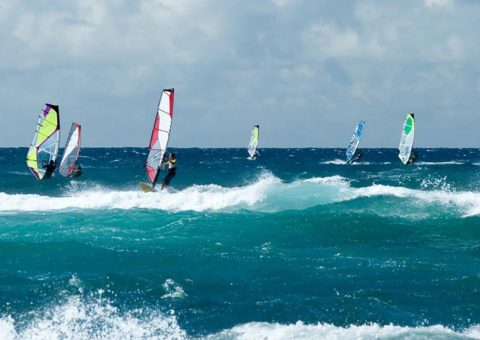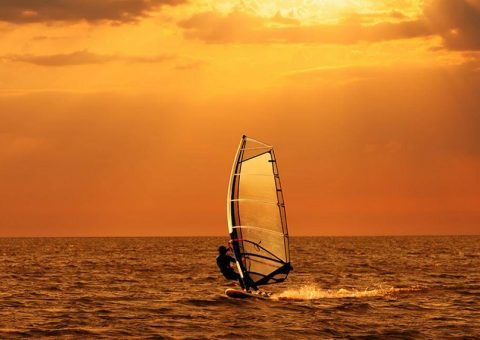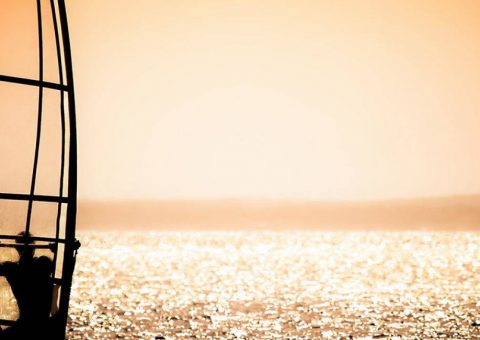Windsurfing
- Windsurf |
Windsurfing
Windsurfing combines surfing with sailing, with riders standing on a longboard and using a movable mast to catch the wind and propel themselves forwards.
There are obvious similarities between the two sports, but unlike surfing, riders use the wind to power their movement, rather than waves. This means that the sport can be practiced on any open body of water, from lakes and rivers to estuaries and oceans. In this way, it is more closely aligned with sailing and has many of the same rules.
On top of this, riders refer to themselves as sailors, rather than surfers. The sport also has some overlap with kitesurfing, but is significantly easier and more accessible to most.
Windsurfing became hugely popular in the 1980s, and as a result was added to the Olympics in 1984 for men and 1992 for women. The sport involves a number of different disciplines, from big-wave riding and freestyle to slalom and course racing.
The board is usually around three metres long with a free-rotating joint that the mast attaches to. To start off, the board and sail will be put into a T-position with the board set out 90º to the wind, and the sail pointing downwind. The rider then stands with one foot on either side of the mast-foot and grabs the up-haul to pull the sail out of the water. Once the sailor has hold of the boom, they move their feet towards the back of the board for balance and wait for the wind to take them where they want to go. With the right angle and sail, windsurfers are capable of reaching speeds of up to 50 knots.
For those that are just starting out, it is most likely that they will do so on flatter waters and will practice catching the wind to move around an open area. Beginners start on large stable boards with small sails before progressing onto smaller boards that are more manoeuvrable and can go at higher speeds.
Smaller sails are best for beginners as it is easier to control their speed, and pulling the sail out of the water (after falling in or to get going) can be hard work. The sail area can be anything from 2.5 m2 to 12m2, depending on conditions, type of windsurfing, and the weight and experience of the rider.
The best part about the sport is that learners can fall off multiple times and are highly unlikely to get injured. Thanks to its nature, it can be enjoyed by riders of any age, and it really is never too late to give it a go!
Alongside the board, riders need a sail, mast and boom. For those sailing in and around the UK, it’s probably also wise to invest in a wetsuit. But unless you’re looking to take it up long-term, it is much easier to rent the equipment at your chose venue, rather than buying your own – as the combination of board and sale is unlikely to be cheap.
For the majority of people, windsurfing is undertaken on a non-competitive basis, and is a great activity to do nearby or whilst on holiday. Despite it not having the warmest waters, the UK is actually one of the windiest places in Europe, so there is no shortage of places to try out the sport.
One of the best places to go is Wales, which offers all levels of sailing, from the calmer waters of Newgale and Laka Bala to the more advanced Rhosneigr and Gower. Alternatively, Britain’s south coast is popular thanks to its strong winds and (marginally) warmer waters. Weymouth and the Isle of Wight are favourites with the windsurfing community.
Ready to give it a go? Take a look at some windsurfing locations below and find out what’s available near you.
Pros
- Quick to rig
- Dynamically the most exciting sailing sport
Cons
- Wind and weather dependent
- Wet and can be cold
Training & Qualifications
Windsurfing in the UK is overseen by the Royal Yachting Association (RYA). RYA accredited centres offer internationally-recognised adult, youth and racing qualifications for all levels of ability.
Gear
Gear can be hired at many centres and beaches in the UK. It is probably wise to do so until you are good enough to tell the difference between sail sizes and the length of board.
Beginners boards offer stability but are sluggish as you improve. An ‘all-rounder’ design will allow you to practise in light winds but is more controllable at higher speeds.
The smaller boards and sails are designed for heavier winds, with more advanced riders selecting equipment based upon the conditions and the type of windsurfing (racing or freestyle).
All Windsurfing Providers
BEST Selling Windsurfing Gear
No products found.




